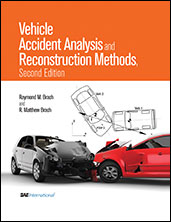Technical Paper
Crush Energy and Planar Impact Mechanics for Accident Reconstruction
1998-02-23
980025
The algorithm used in the third version of the Calspan Reconstruction of Accident Speeds on the Highway (CRASH3) and planar impact mechanics are both used to calculate energy loss and velocity changes of vehicle collisions. They (intentionally) solve the vehicle collision problem using completely different approaches, however, they should produce comparable results. One of the differences is that CRASH3 uses a correction factor for estimating the collision energy loss due to tangential effects whereas planar impact mechanics uses a common velocity condition in the tangential direction. In this paper, a comparison is made between how CRASH3 computes the energy loss of a collision and how this same energy loss is determined by planar impact mechanics.


